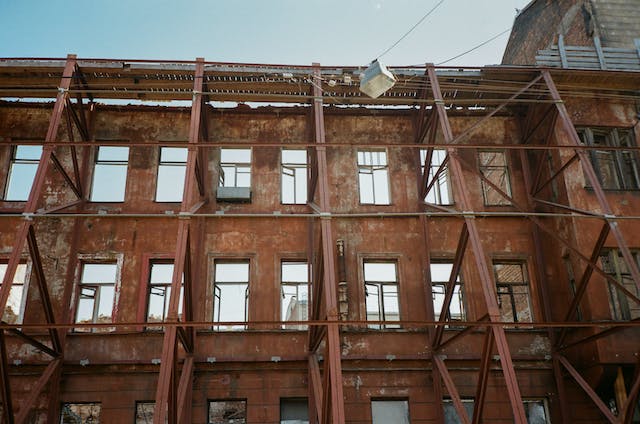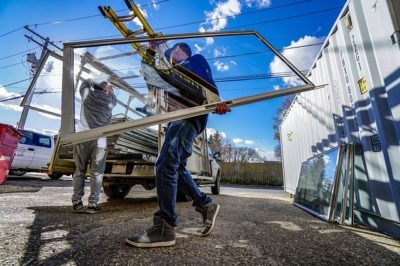Structural integrity is of paramount importance when it comes to the safety and functionality of any building or infrastructure. However, over time, structures can experience sagging or deformation due to various factors such as age, material deterioration, and external loads. In this blog post, we will explore the challenges in assessing and restoring the integrity of sagging structures, and the techniques used to ensure their long-term stability.
Understanding Sagging Structures
Sagging structures refer to buildings and infrastructure that have experienced a loss of vertical alignment or have deformed under load. This can manifest as visible signs such as cracks, tilting, or bending of beams, columns, or walls. Sagging can occur in different types of structures, including residential buildings, bridges, and industrial facilities.
Causes of Sagging
Several factors contribute to the sagging of structures. One primary cause is the natural ageing process, where materials such as concrete, steel, or wood weaken over time. Environmental conditions, such as temperature fluctuations, moisture intrusion, and exposure to chemicals, can accelerate the deterioration process. Additionally, inadequate design or construction practices, excessive loads, seismic activity, or accidents can also lead to structural sagging.
Assessing Structural Integrity
To assess the integrity of a sagging structure, engineers and experts employ a range of techniques. These include visual inspections, non-destructive testing methods, and structural analysis. Visual inspections involve visually identifying any visible signs of distress, such as cracks or deformations. Non-destructive testing methods, such as ultrasound, infrared thermography, or ground-penetrating radar, are used to detect hidden defects and evaluate the condition of the materials. Structural analysis involves using computer models and simulations to determine the structural capacity, identify weak points, and predict behaviour under different loading scenarios.
Restoring Structural Integrity
Once the structural issues are identified, the next step is to restore the integrity of the sagging structure. This often involves reinforcing or replacing damaged sections of the structure. Let’s take a look at a specific example of this process in West Jordan, Utah. A residential building was found to have a sagging roof due to prolonged exposure to heavy snow loads and inadequate roof framing. A local team of engineers in West Jordan was tasked with the job of replacing the roof and restoring the structural integrity of the building.
The old roof was carefully dismantled, and in its place, a new roof structure designed to withstand the local snow loads was installed. The project was a success, and the building is now safe and sound. This case study highlights the importance of timely assessment, repair, and replacement in maintaining the integrity of structures. Experts in West Jordan, just as in any other part of the world, use their technical skills and knowledge to ensure the safety and longevity of buildings and infrastructures.
Restoring Sagging Structures
Restoring sagging structures requires a comprehensive approach that considers the root causes of sagging, the severity of the deformation, and the desired long-term stability. The restoration process typically involves the following steps:
- Investigation and Diagnosis: A thorough investigation is conducted to understand the underlying causes of sagging and assess the extent of damage. This includes evaluating the structural system, materials, and any deficiencies in design or construction.
- Stabilization: Temporary stabilization measures may be implemented to prevent further deformation and ensure the safety of occupants and workers. This can include shoring, bracing, or reinforcing the structure using steel beams, cables, or carbon fibre wraps.
- Repair and Rehabilitation: Repairs are carried out to address the specific issues identified during the investigation. This may involve patching cracks, replacing damaged components, strengthening weak elements, or applying protective coatings.
- Long-Term Solutions: To ensure the long-term stability of the structure, engineers may recommend additional measures such as improving drainage systems, reinforcing foundations, upgrading materials, or implementing regular maintenance programs.
Advanced Techniques for Restoration
As technology advances, new techniques have emerged to restore sagging structures more effectively. Some of these techniques include:
- Structural Strengthening: This involves adding additional support elements, such as external post-tensioning systems or steel braces, to enhance the load-carrying capacity of the structure.
- Structural Health Monitoring: By installing sensors and monitoring systems, engineers can continuously monitor the behaviour and condition of the structure in real time. This allows for early detection of potential issues and timely intervention.
- Non-Destructive Evaluation: Advanced non-destructive evaluation methods, such as digital image correlation or acoustic emission testing, can provide valuable insights into structural behaviour and help pinpoint areas of concern.
Sagging structures pose serious risks to the safety and functionality of buildings and infrastructure. Assessing and restoring the integrity of these structures requires a multi-disciplinary approach, combining visual inspections, non-destructive testing, structural analysis, and advanced restoration techniques. With proper assessment, diagnosis, and restoration, sagging structures can be revitalized and made safe for continued use, ensuring the longevity and safety of our built environment.










